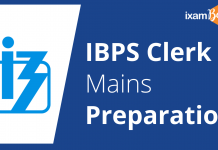GPS: Global Positioning System
The Global Positioning System (GPS) is a navigation system that uses satellites to determine where you are. It is a satellite-based navigation system that allows ground users to determine their exact location, velocity, and time 24 hours a day, in any weather, anywhere on the planet. The US Department of Defense maintains and develops it, and it was originally designed to aid soldiers and military vehicles, but it has since been made available to anyone with a GPS receiver. Airlines, shipping companies, courier companies, and drivers, among others, use it to track vehicles and find the best route from one location to another.
The first GPS was developed in the 1960s to aid US Navy ships in more accurately navigating the oceans. The first system consisted of five satellites that allowed ships to check their position every hour.
Apart from other uses made possible by the addition of GPS to mobile devices, an increasing number of people rely on GPS technology to safely guide them to their destination. Today, GPS technology is transforming the way we live and connect, and its recent advances have a profound impact on all of our lives. GPS is a gradual process that is transforming many different aspects of human activity.
Segments of GPS
It can be divided into three different segments which are as follows:
Space Segment: It refers to satellites. The GPS constellation consists of 24 satellites orbiting the Earth at a distance of 20,051 kilometers (12,532 miles) in six orbital planes with a 55-degree inclination. Each satellite finishes one orbit in one-half of a sidereal day, passing over the same spot on Earth once per sidereal day, or roughly 23 hours and 56 minutes. With this orbital configuration and number of satellites, a user can see at least four satellites 24 hours a day from any location on Earth.
Operational Control Segment (OCS): It refers to stations on Earth developed to maintain and monitor the satellites. The GPS OCS is made up of the master control station (MCS) at Falcon Air Force Base in Colorado Springs, Colorado; remote monitoring stations in Hawaii, Diego Garcia, Ascension Island, and Kwajalein; and uplink antennas at three of the four remote monitor stations as well as the MCS. By tracking each GPS satellite in orbit, monitoring its navigational signal, and relaying this information to the MCS, the four remote monitor stations help with satellite control. The four stations can monitor and measure each GPS satellite’s location for 20 to 21 hours per day. The MCS is connected to the remote monitoring stations via land-based and space-based communications.
User Segment: It refers to users who calculate position and time using navigation signals received from GPS satellites. The cost and complexity of GPS user equipment vary greatly depending on the receiver design and application. Receiver sets range in price from around $135 to $30,000 and can vary from simple devices that only provide basic location coordinates to complex multichannel units that monitor all satellites in view and execute a range of purposes.
Working of GPS
Image Source: https://www.nap.edu/read/9254/chapter/5
At a height of about 11,500 miles, there are 24 satellites plus some spares in orbit with a period of 12 hours (two orbits per day). Satellites are positioned so that four satellites are visible above the horizon from any location on the planet.
To receive the data, the GPS device must first establish a connection with three to four satellites. The GPS satellite sends out a message including the receiver’s location. The triangulation process is used by the GPS receiver to combine messages from different satellites to calculate the exact position.
The communication between GPS satellites requires an unobstructed line of sight. As a result, this technology is not suitable for indoor use.
Some devices connect to nearby cell towers and public Wi-Fi networks. This technology is known as LPS (Local Positioning System), and it works as a replacement for GPS.
Satellites are similar to stars in constellations. Radar is used by the ground stations to ensure where they are exactly. A receiver, such as the one in your phone or in your car, is constantly scanning the sky for signals from these satellites. The receiver calculates their distance from some of them. The receiver knows exactly where you are once it calculates your distance from four or more satellites. And there you have it! Your precise location on the ground can be determined from thousands of miles in space! They can usually pinpoint your location to within a few yards of where you are. More advanced receivers, on the other hand, can pinpoint your location within a few inches!
GPS in everyday life
Our daily lives have been transformed by GPS. The Global Positioning System, or GPS, is a satellite tracking system that can be used for a variety of commercial and personal purposes.
One example is the implementation of a GPS vehicle tracking system. It has a wide range of commercial applications, including taxi and cab services.
The importance of GPS technology in achieving greater efficiency is now recognized by the majority of businesses. As a result, people will receive better benefits.
When business professionals understand how GPS can help them improve their business or services, they can take their company to the next level. For explorers, GPS technology is a useful and reliable tool.
Global Positioning System applications generally fall into 5 major categories:
- Location – determining a position
- Navigation – getting from one location to another
- Tracking – monitoring object or personal movement
- Mapping – creating maps of the world
- Timing – bringing precise timing to the world
GPS technology has a wide range of applications, from mining to aviation, agriculture to marine, recreation to defense. Doctors, scientists, farmers, soldiers, pilots, hikers, delivery drivers, sailors, fishermen, dispatchers, athletes, and people from all walks of life use GPS systems to make their jobs more productive, safer, and easier these days.
Precision agriculture, automotive, and defense are three of the most common industrial applications of GPS.
Facts about GPS
- Scientists in Minnesota use GPS to track deer movements and feeding habits
- After the bombing in Oklahoma City, surveyors used GPS to determine how the buildings shifted
- Landowners can use GPS to resolve property disputes
- When searching for shipwrecks, marine archaeologists use GPS to guide their research vessels
- Mt. Everest is growing taller according to GPS data!
- GPS is the only system available today that can display your exact location on the Earth at any time, in any weather, and regardless of where you are!
Also Read:
Full-Form of VPN with all details
INTERNATIONAL DAY OF REFLECTION ON THE 1994 GENOCIDE IN RWANDA – April 7
World Autism Awareness Day (WAAD) 2021
Good Friday 2021: Know The Significance here!
Get Free Online Test Series, GK updates in form of Beepedia, BeeBooster, as well as latest updates for Bank PO, Bank Clerk, SSC, RBI, NABARD, and Other Government Jobs.












